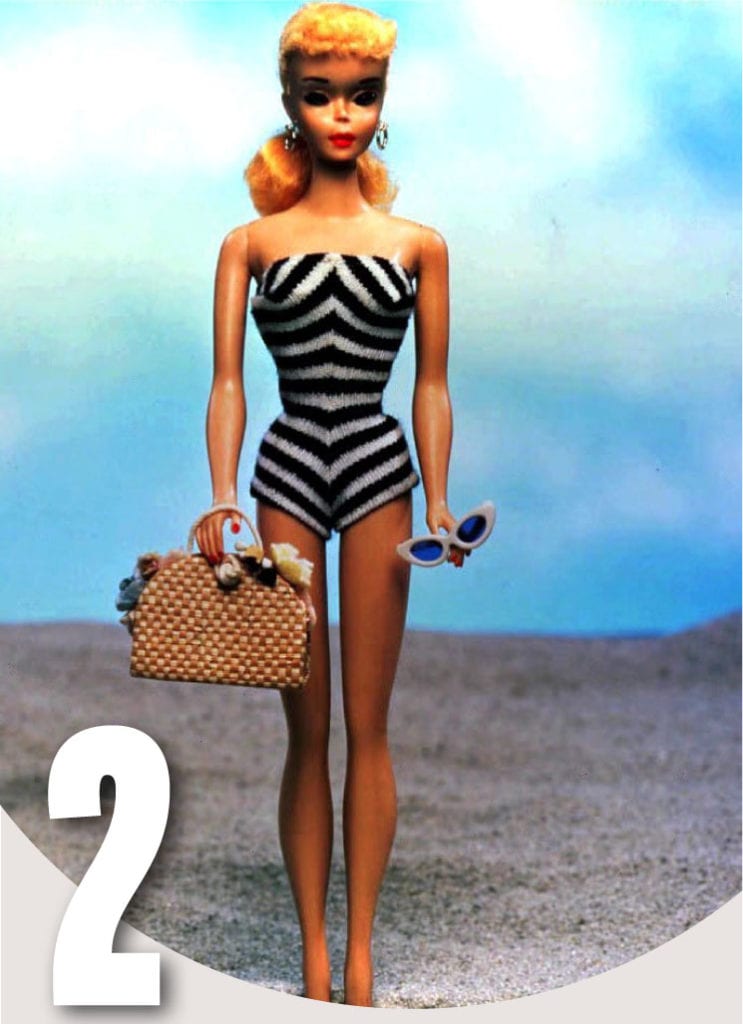As we approach Christmas, in the first of a three-part series, we look at popular toys from down the decades, beginning this week with the 1960s and 1970s when it was all about Stretch Armstrong and Barbie...

PONG - HOME VERSION
1970s
Hailing from the 1970s, this was one of the first home computer games. In fact, you might say it was the birth of mass home computer game industry. People might queue round the block today for the latest iteration of Call of Duty or Grand Theft Auto but back in the ‘70s, adults were fascinated by the simple, yet highly addictive two player on-screen form of tennis.
Pong made the leap from arcade game to living room platform and proved so popular it virtually invented a new industry, one which in 2016 was said to be worth a staggering £99bn... and it all started with a simple ball and paddle game.

RANGE OF BARBIE DOLLS
1960s
The Barbie doll has been a perennial favourite among children and even today continues to sell well.
Barbie was born in 1959 at the American International Toy Fair. Created by businesswoman Ruth Handler to show little girls they could be anything they wanted to be and that ‘a woman has ‘choices’. Barbie’s full name, in case you were wondering, is Barbara Millicent Roberts and she hails from the town of Willows in Wisconsin, USA. Handler created her after seeing a doll while travelling in Switzerland in 1956.

DIE-CAST MODEL CARS
1960s
Die cast model cars might not have been introduced in the ‘60s and ‘70s - in fact Citroen used to make its own models for promotion purposes back in the 1920s - but it was the era when their popularity soared. Back in those pre-mobile phone/computer driven decades, children were forced to use their imaginations in order to entertain themselves and so die-cast models were just the thing to make up your own car chases and crashes. Today, some of those old toys are worth more than full sized cars, with classics fetching tens of thousands at auction.

STRETCH ARMSTRONG
1970s
Stretch Armstrong was every child’s dream toy, because he could be stretched up to four times his original size (over 4ft in length) and when you let go of his limbs, he would just go back to his normal size, with no stretch marks at all. (If he was ever ‘injured’, he could be simply repaired with a sticking plaster.)
But what was Stretch made of? His innards consist of a mixture of corn syrup and other sugars, gum, flour, pine resin and other ingredients. In 2016, Hasbro announced the return of the Stretch Armstrong toy in its original 1976 design.

SCALEXTRIC
1960s/1970s
Scalextric dominated the 1960s and 1970s with its slot-car race game, which allowed two or more players to race toy cars around a circuit they built themselves from interconnecting pieces.
Scalextric was unveiled at the Harrogate Toy Fair in 1957 and became an instant hit. At one point the company was producing up to 7000 cars a week.
In 2009, TV presenter James May entered the record books by making the world’s longest Scalextric track, a replica of the Brooklands race circuit, which ran for 2.75 miles.

TWISTER - PARTY GAME
1960s
If you were throwing a party in the 1960s and you wanted to provide some form of entertainment other than knitting and apple-bobbing, then Twister would be your go-to toy. A box-set of frantic fun, it was the game which got people up close and personal and more often than not falling over themselves to win.
Twister became a success when actress Eva Gabor played it with Johnny Carson on television’s The Tonight Show on May 3, 1966. It was the first popular game to use people as playing pieces. When it was originally developed, it was called ‘Pretzel’ but that name had already been taken.